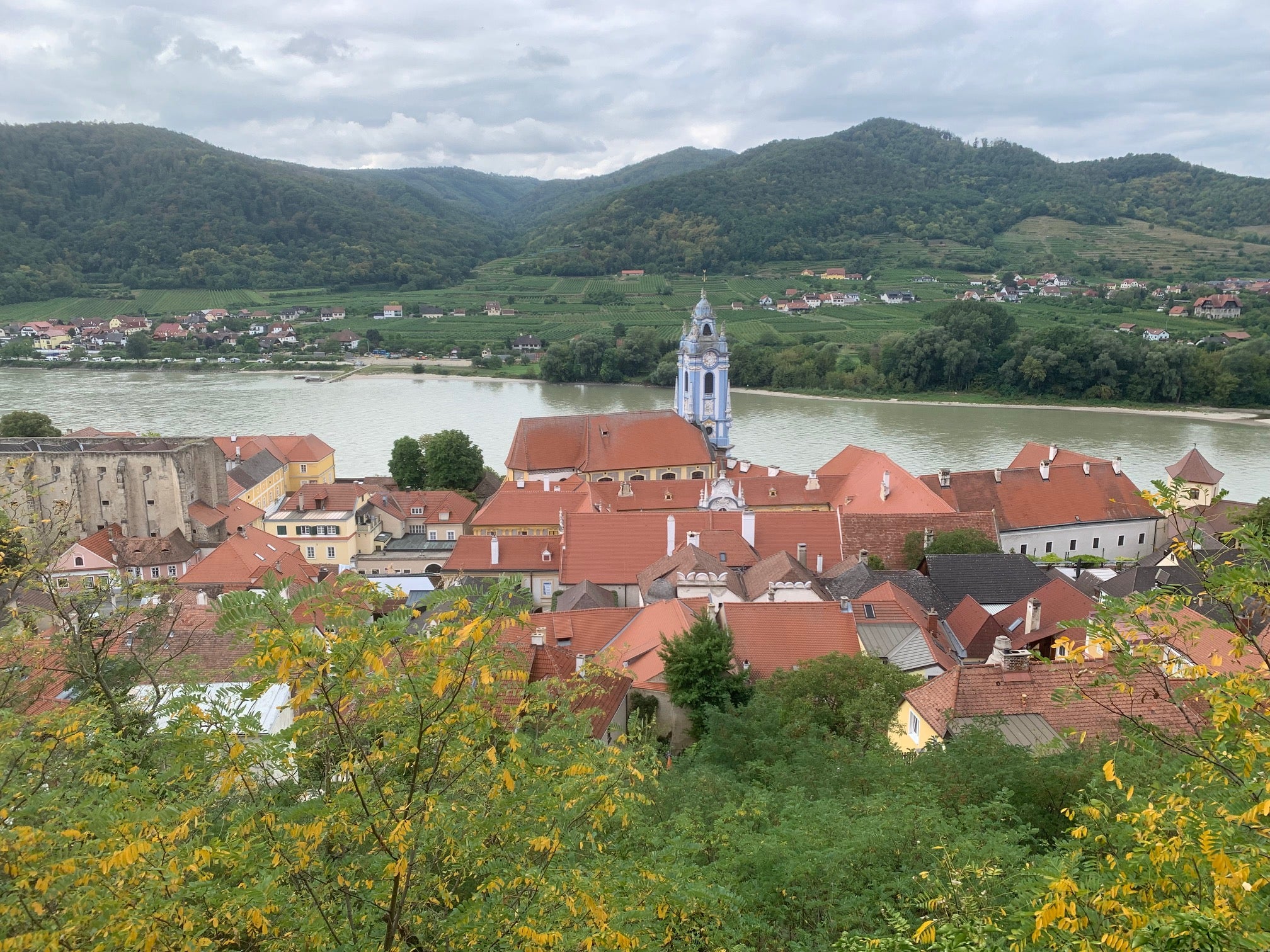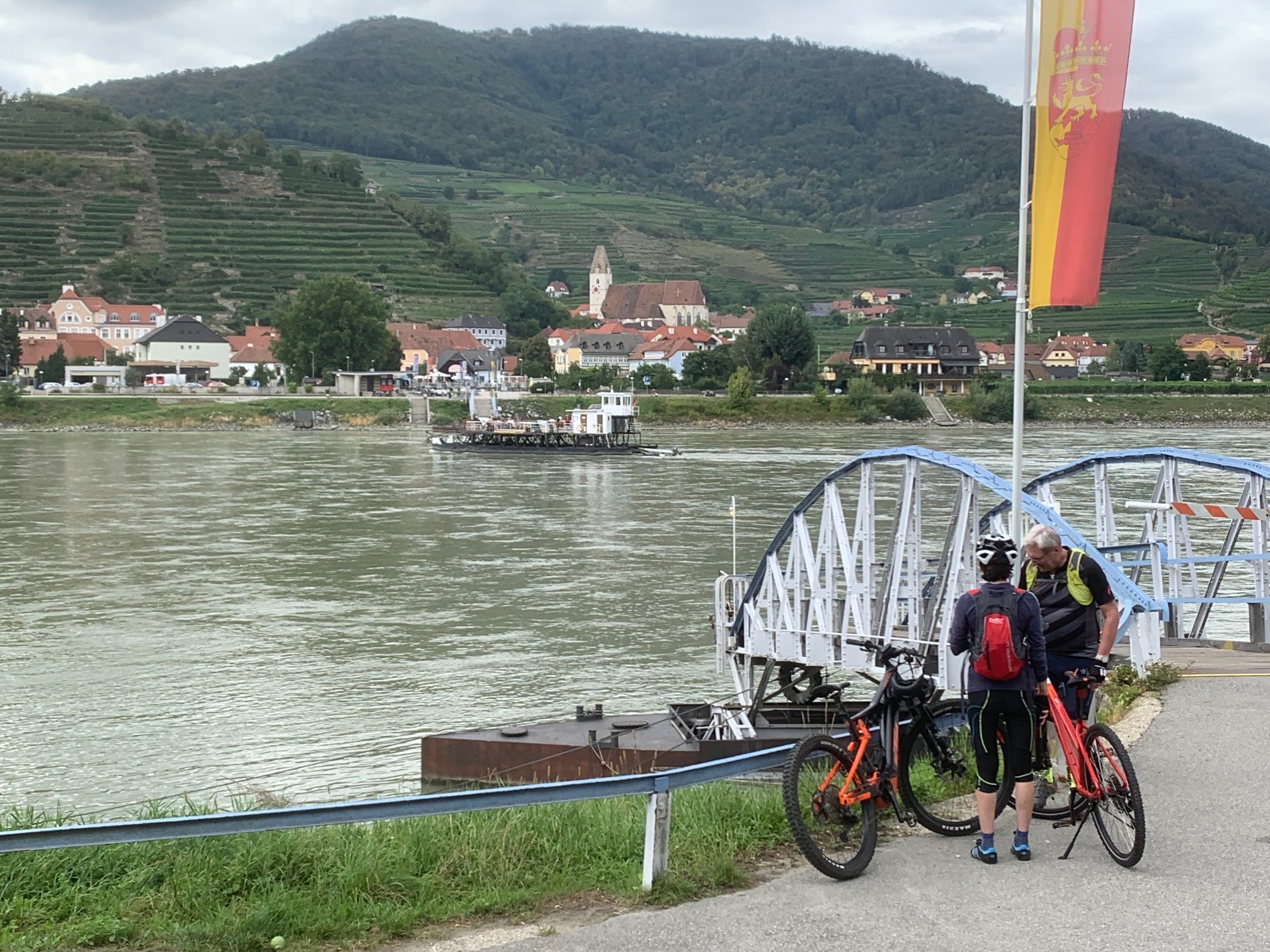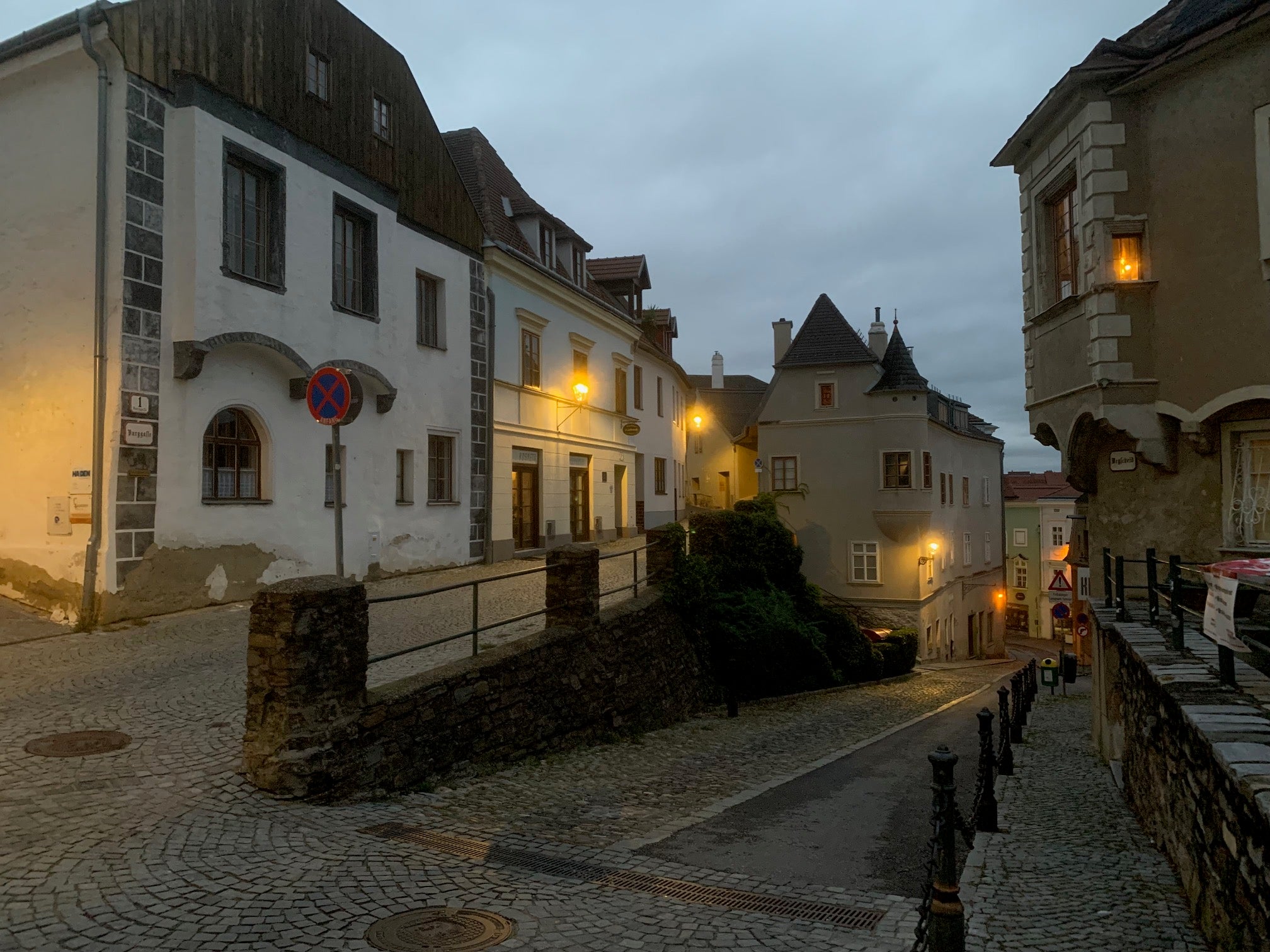Wandering the Wachau: How to do the best bit of the Danube
Many cruisers merely glimpse this exquisite wine-producing region in Austria, but it more than deserves your full attention, writes Andrew Eames


There’s a section of the Danube in Austria that seduces all comers. It’s a bucolic 22-mile stretch, where the river sashays through a valley whose slopes are strung like a harp with vineyards. A valley dotted with monasteries and castles, crowned by forest, whose delightful villages are clusters of pastel-coloured houses. This is the Wachau, Austria’s pre-eminent wine-producing region.
Dotted with small winemaker’s taverns, the region, with its curious water-powered ferries and its fruitful orchards whose 100,000 apricot trees blossom every spring, starts at Melk in the west and finishes at Krems in the east. A large proportion of its visitors just glimpse it in passing, on Danube cruises bound for the likes of Vienna and Budapest. The valley may not have the allure of a big city, but it is a World Heritage Site, and a very sustainable one, too. It is best explored by way of a famous cycle path, local riverboats, and a meandering little train.
The first step is to get to Krems, a handsome transport hub at the Wachau’s downriver end. Trains from Vienna to Krems take just over an hour, and the town itself makes a good base, with a selection of hotels and restaurants. I would recommend staying in the Hotel Unter der Linden, and stopping for dinner in the traditional Gasthaus Jell, with its old wooden dressers and lace tablecloths.

Between Krems and Melk are three other, much smaller destinations – Durnstein, Weissenkirchen and Spitz – and there are three ways of reaching them: by bicycle, by boat and by train. Closest to Krems is Durnstein, the prettiest of the riverside villages, easily accessed along one of the most popular cycle paths in Europe. Rent a bicycle from Wachau Explorer’s cycle shop on Krems’ pedestrianised main street, then head out through the pretty village of Stein and follow the Danube cycle path where it winds inland through a patchwork of vineyards.
Durnstein is the first place you’ll come to, on a bend in the river. Its main landmark is a monastery belltower in delicate porcelain blue, with an array of galleries, chocolaterias and perfumeries lining its cobbled main street. High up on the bank above it rear the ruins of a castle where England’s Richard the Lionheart, aka King Richard I, was briefly incarcerated en route back from the Crusades in 1192. There isn’t much left of the castle, and the climb up to it can be hard work, but the view is spectacular.
Read more on Austria travel:
The next destination upriver is sleepy Weissenkirchen – possibly sleepy because of all the wine consumed here. The vineyards around the village are some of the best in the Wachau, especially the stone terracing on “thousand bucket hill”, so called thanks to its productivity. The local Gruner Veltliner here isn’t sold by the bucketful, but you can get a glass in Weissenkirchen for as little as £1.50.
The next destination, Spitz, is more of a town than a village, and is the location for an ancient engineless Danube ferry which glides peacefully back and forth across the river, powered by a combination of the river’s current and an overhead cable. It’s worth making this curious crossing to seek refreshment in the south bank’s Heuriger Gluck, in the tiny hamlet of Mitterarnsdorf.

A heuriger is an informal winemaker’s tavern, improvised in courtyards and gardens, operated in season by the winemaker and his or her family. The word heuriger translates as “wine from the latest harvest”, drawn fresh from the barrel, and traditional basic food is usually offered, too. Dishes might include hauerjause, a platter with homemade cheese, pate and pickles, and grammelschmalzbrot, bread slathered in pork fat and topped with onions and paprika.
A Wachau heuriger is usually marked by a cluster of pine branches above a doorway, indicating that the winemaker is open to visitors and has something he thinks you’ll enjoy. In Gluck’s case it is a courtyard and garden often filled with merry cyclists, but there are great locations like these up and down the valley, including in the town of Krems itself, where Heuriger Hambock has views across the river to where the abbey of Gottweig straddles the opposite hilltop like a baroque fortress. You can spend a tipsy summer’s evening under the vines here and end up spending barely more than £10.
Back to the Wachau itself, another more famous abbey lords it over the valley’s western end. Besides its original 200 Benedictine monks (reduced to 24 today), baroque Melk was built to accommodate the visiting Habsburg emperor and his retinue. Its 497 rooms, with frescoed ceilings and a Hogwartsian library of more than 100,000 books, are arranged around seven courtyards. Some of them are now occupied by a school, and others are open to the public.

Melk is the furthest point from Krems, and sturdy cyclists can cover the 22-mile section of the Danube cycleway without difficulty, but there are very pleasant alternatives. A privately operated tourist train runs along the north bank several times a day, and will take bikes. There’s also the regular Brandner riverboat service, which runs between Krems and Melk twice a day in each direction, stopping at all the key points in between.
Whichever transport method you choose, take it gently. The Wachau is a place to savour, and one you won’t quickly forget.
Travel essentials
Getting there
Trying to fly less?
Take the Eurostar to Paris and change for a sleeper train to Vienna. From there it’s just over an hour’s train ride to Krems.
Fine with flying?
British Airways, Ryanair, Wizz Air and Austrian all offer direct UK-Vienna flights. It’s just over an hour by train from Vienna to Krems.
Staying there
The Hotel Unter der Linden in Krems has doubles from €59 (£52).
Read more of our best Europe hotel reviews






Join our commenting forum
Join thought-provoking conversations, follow other Independent readers and see their replies
Comments